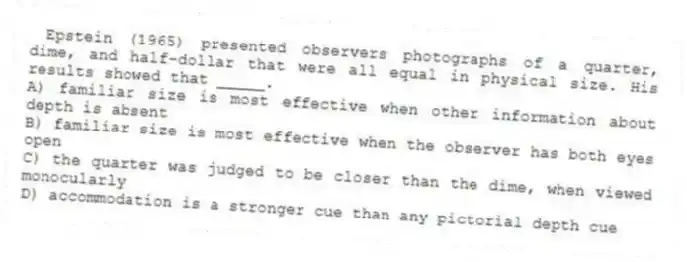
Epstein (1965) presented observers photographs of a quarter, dime, and half-dollar that were all equal in physical size. His results showed that _____.
A) familiar size is most effective when other information about depth is absent
B) familiar size is most effective when the observer has both eyes open
C) the quarter was judged to be closer than the dime, when viewed monocularly
D) accommodation is a stronger cue than any pictorial depth cue
Correct Answer:
Verified
Q7: Individuals with "walleye" or other conditions in
Q8: Several years ago, Bryce, a devoted fan
Q9: As Tyler looks down a railroad track,
Q10: Of the oculomotor depth cues, convergence is
Q11: The imaginary plane in which all objects
Q13: What depth cue could be classified as
Q14: Merrill watches his finger with both eyes
Q15: Motion parallax _.
A) is widely used to
Q16: _ is the difference in the images
Q17: Vinod is standing on a rooftop in
Unlock this Answer For Free Now!
View this answer and more for free by performing one of the following actions

Scan the QR code to install the App and get 2 free unlocks

Unlock quizzes for free by uploading documents